 Kyoto, the former capital of Japan, is a city steeped in rich
Kyoto, the former capital of Japan, is a city steeped in rich
history and culture. With its traditional architecture, stunning temples, and vibrant food scene, Kyoto is a must-visit destination for travelers seeking a taste of authentic Japan.
In this travel guide, we’ll explore some of the top attractions, food options, and cultural experiences Kyoto offers.
Table of Contents
- Brief History
- Getting There
- When to Go
- Accommodations
- Attractions
- Food & Drink
- Cultural Experiences
- Tips For Visiting
Brief History
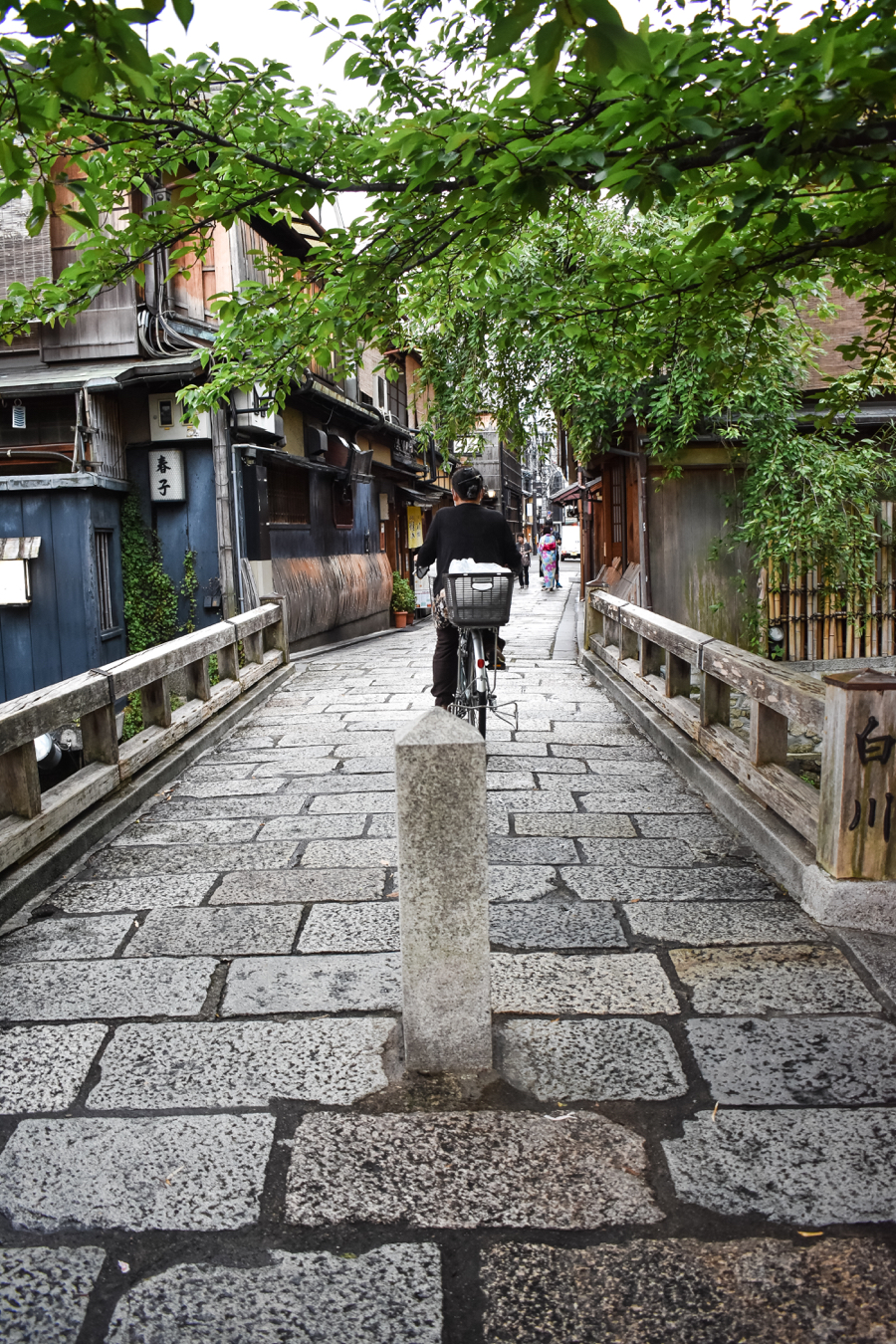 Kyoto has a rich and fascinating history that dates back over 1,000 years. The city was founded in 794 AD when Emperor Kammu moved the capital from Nara to a new location better suited for political and cultural development.
Kyoto has a rich and fascinating history that dates back over 1,000 years. The city was founded in 794 AD when Emperor Kammu moved the capital from Nara to a new location better suited for political and cultural development.
Under the Heian Period (794-1185), Kyoto became the center of Japanese culture, literature, and art. Many of the country’s most famous works of literature, such as “The Tale of Genji,” were written during this time, and the city’s aristocratic court culture flourished.
In 1185, Kyoto was attacked and captured by the Minamoto no Yoritomo warrior clan, leading to the rise of the Kamakura Period (1185-1333). Kyoto remained an important cultural center during this time, but real political power shifted to the warrior class.
In the Muromachi Period (1336-1573), Kyoto became the center of the Ashikaga Shogunate, a powerful military government that ruled Japan for over 200 years.
The city’s economy and culture flourished during this time, and many of Kyoto’s most famous temples and gardens were built.
During the Edo Period (1603-1868), Kyoto remained an important cultural and artistic center, but real political power shifted to the Tokugawa Shogunate in Edo (modern-day Tokyo).
Despite this, Kyoto continued to thrive as a center of traditional arts and crafts, and many of its famous festivals and cultural traditions were established during this time.
In 1868, the Meiji Restoration led to the end of the samurai era and the opening of Japan to the world.
Kyoto remained an important cultural and artistic center during modernization, and many of its traditional crafts and cultural practices were preserved and celebrated.
Today, Kyoto remains one of Japan’s most important cultural and historical centers, and its rich heritage is celebrated and preserved through its temples, gardens, festivals, and traditional arts and crafts.
Getting There
Kyoto is a major tourist destination in Japan and is easily accessible by several modes of transportation. Here are the most common ways to get to Kyoto:
By Air
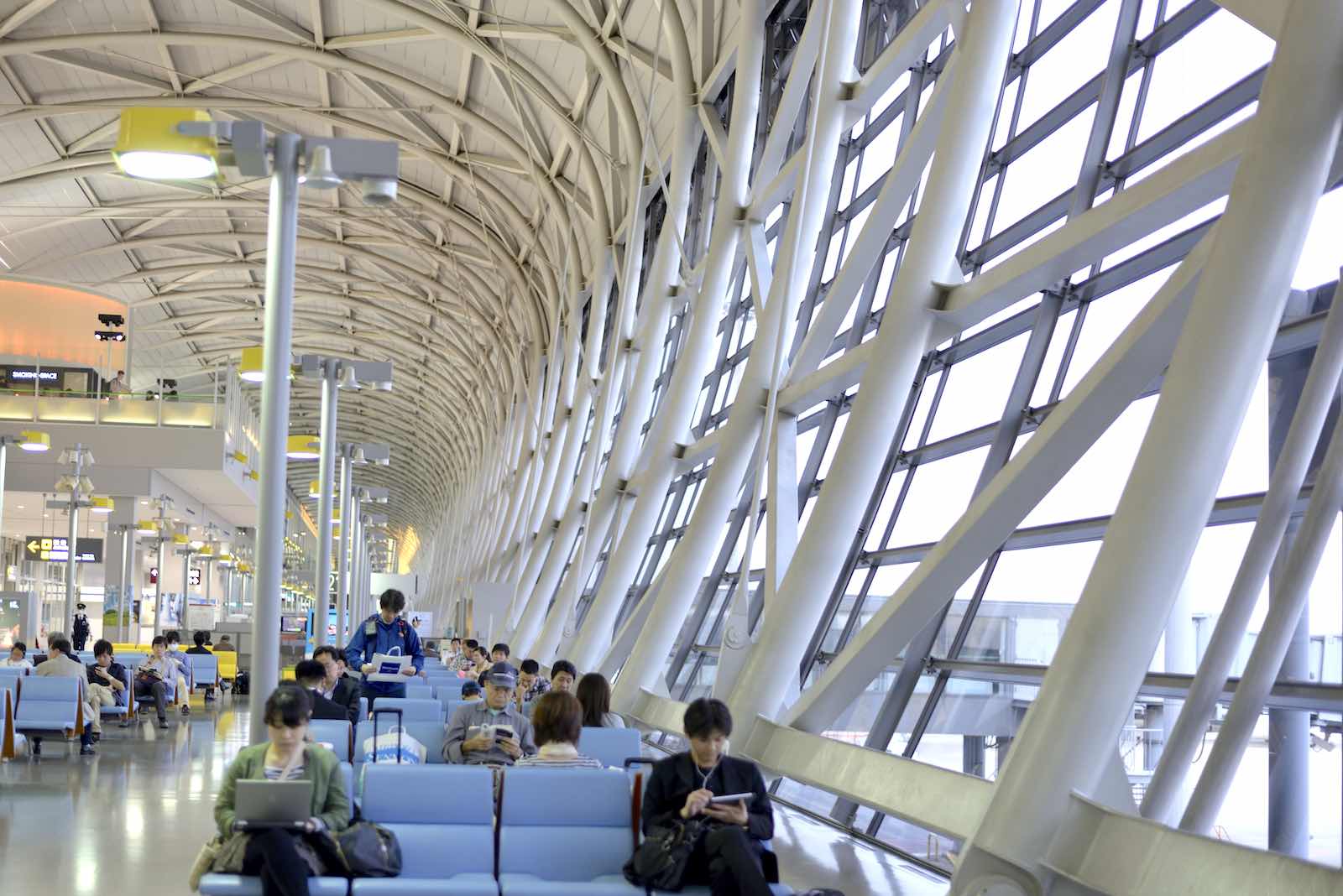 Kyoto doesn’t have its own airport, but it’s well-connected to two major airports in the region:
Kyoto doesn’t have its own airport, but it’s well-connected to two major airports in the region:
- Kansai International Airport (KIX): This is the main airport serving the Kansai region, which includes Kyoto, Osaka, and Kobe. You can take a direct train from the airport to Kyoto Station, which takes around 75 minutes.
- Itami Airport (ITM): This is a smaller airport located in Osaka, which mainly serves domestic flights. You can take a direct bus from the airport to Kyoto Station, which takes around 50 minutes.
By Train
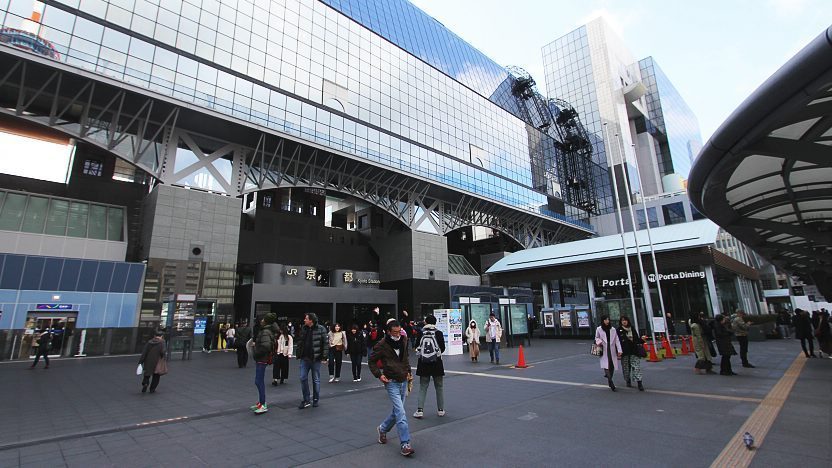 Kyoto is well-connected to Japan’s extensive rail network, and there are several options for getting to Kyoto by train:
Kyoto is well-connected to Japan’s extensive rail network, and there are several options for getting to Kyoto by train:
- Shinkansen (Bullet Train): Kyoto is located on the Tokaido Shinkansen line, which connects Tokyo and Osaka. From Tokyo, the journey to Kyoto takes around 2.5 hours, while from Osaka, it takes around 15-30 minutes depending on the type of train.
- Limited Express Trains: Several limited express trains connect Kyoto to other parts of Japan, such as the Thunderbird, which connects Kyoto to Kanazawa on the Sea of Japan coast.
- Local Trains: If you’re on a budget, you can also take local trains to Kyoto from nearby cities like Osaka and Nara.
By Bus
There are several bus companies that operate long-distance buses to Kyoto from major cities in Japan. The buses are usually cheaper than trains, but they take longer and can be less comfortable.
By Car
If renting a car in Japan, you can drive to Kyoto via several highways, such as the Meishin Expressway from Osaka. However, remember that parking in Kyoto can be expensive and difficult to find.
When to Go
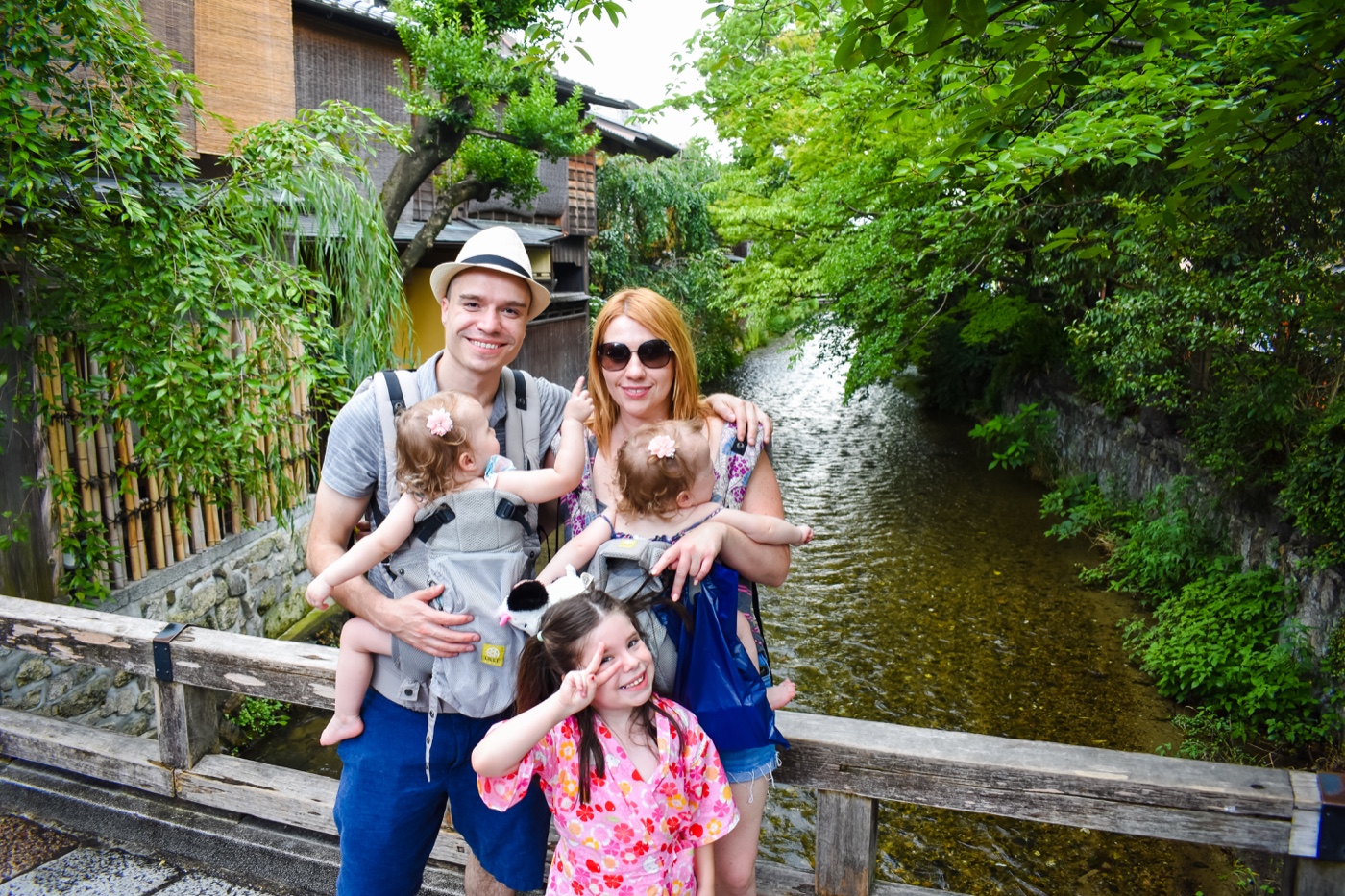 The best time to visit Kyoto depends on your preferences and what you want to do while you’re there. Here’s a breakdown of the seasons in Kyoto:
The best time to visit Kyoto depends on your preferences and what you want to do while you’re there. Here’s a breakdown of the seasons in Kyoto:
Spring (March to May)
Spring is a popular time to visit Kyoto because of the cherry blossoms. The cherry blossoms usually bloom in late March to early April, and it’s a beautiful time to see the city’s parks and temples come alive with pink and white blossoms. However, this is also the busiest time of the year, so expect large crowds and higher prices.
Summer (June to August)
Summer in Kyoto is hot and humid, with temperatures often reaching above 30°C (86°F). However, there are many festivals and events during the summer months, including the Gion Matsuri in July, which is one of Japan’s largest festivals. The summer is also a great time to hike in the nearby mountains.
Autumn (September to November)
Autumn in Kyoto is a beautiful time to visit because of the autumn leaves. The leaves usually start changing colors in late October to early November, and the city’s parks and temples become a riot of red, orange, and yellow hues. The autumn is also a great time to enjoy outdoor activities like hiking and cycling.
Winter (December to February)
Winter in Kyoto is cold but often sunny, with occasional snowfall. This is a great time to enjoy hot springs, onsen, and seasonal foods like yudofu and oden. The winter is also a quieter time to visit, with fewer crowds and lower prices.
Overall, the best time to visit Kyoto depends on what you want to do and see while you’re there.
Plan your trip accordingly if you’re interested in the cherry blossoms or autumn leaves. However, if you want to avoid crowds, then consider visiting during the quieter winter months.
Accommodation
Kyoto has a wide range of accommodation options, from budget-friendly hostels to luxury ryokans (traditional Japanese inns).
Some of the best areas to stay in Kyoto include the Gion district, known for its geisha culture and traditional architecture, and the Higashiyama district, home to many of Kyoto’s famous temples and shrines.
Top Attractions
Kyoto has a wealth of cultural and historical attractions, but some of the must-visit sites include:
Fushimi Inari Shrine
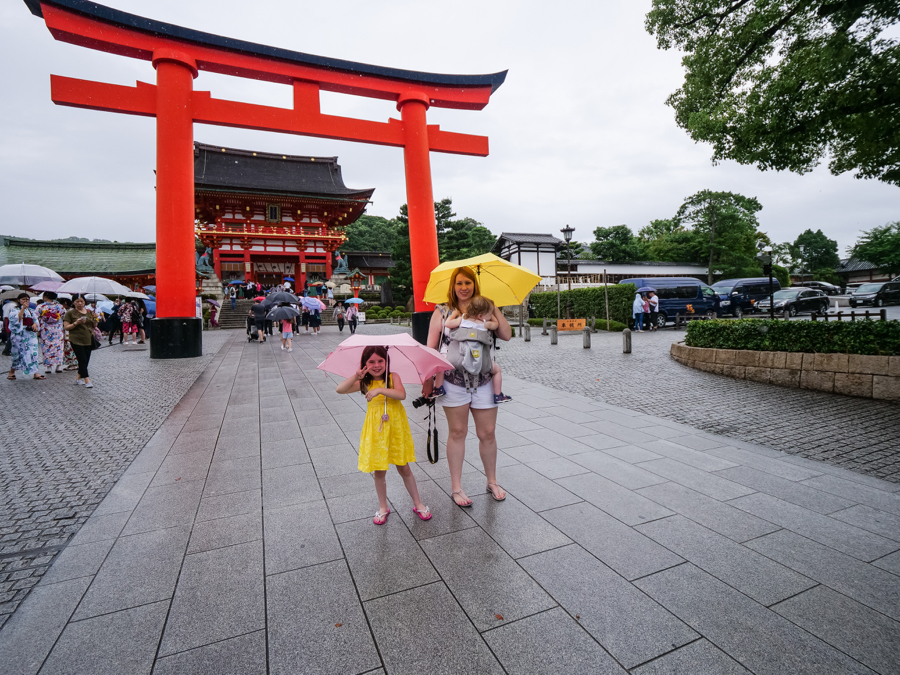
Fushimi Inari Shrine is one of Kyoto’s most iconic landmarks and a must-visit destination for anyone traveling to the city.
The shrine is located in the Fushimi ward of Kyoto, and it’s famous for its thousands of vermillion torii gates that form a tunnel-like pathway up the mountain.
The shrine is dedicated to Inari, the Shinto god of rice and prosperity, and it’s believed that the torii gates represent a passage from the physical world to the spiritual realm.
The shrine dates back to the 8th century, one of Japan’s oldest and most important shrines.
The shrine’s main attraction is the torii gates, forming a network of pathways that lead up the mountain.
The hike to the top takes around 2-3 hours, and it’s a beautiful and peaceful walk through the forest. Along the way, you’ll also see several smaller shrines and stone fox statues.
The main shrine buildings are located at the base of the mountain, including the Higashi Honganji, a UNESCO World Heritage Site.
The buildings are ornate and beautiful, with intricate wood carvings and gold leaf decorations.
Several food stalls and souvenir shops are located around the shrine, where you can try local delicacies like Inari sushi (rice wrapped in fried tofu) and buy souvenirs like fox statues and lucky charms.
Kinkaku-ji (Golden Pavilion)
Kinkaku-ji, also known as the Golden Pavilion, is one of Kyoto’s most famous attractions and a UNESCO World Heritage Site. The pavilion is located in the northern part of the city and is famous for its stunning gold leaf exterior.
The history of Kinkaku-ji dates back to the 14th century when it was built as a villa for a wealthy aristocrat. Later, it was converted into a Zen Buddhist temple, and it’s now one of the most popular temples in Kyoto.
The temple’s main attraction is the stunning gold leaf exterior of the pavilion, which reflects in the nearby pond.
The pavilion has three floors; the upper floors are covered with gold leaf. The gold leaf is said to represent the purity of Buddha’s teachings.
The temple grounds are spacious and beautiful, with several gardens, ponds, and walking paths. Several smaller shrines and statues are also located around the temple, which are worth exploring.
Several tea houses are located around the temple where you can try local tea and snacks like green tea and Japanese sweets. The tea houses have beautiful views of the temple and the surrounding gardens.
Kiyomizu-dera
Kiyomizu-dera is a historic Buddhist temple in eastern Kyoto and another UNESCO World Heritage Site. The temple is perched on a hillside and offers stunning city views, making it a popular destination for tourists.
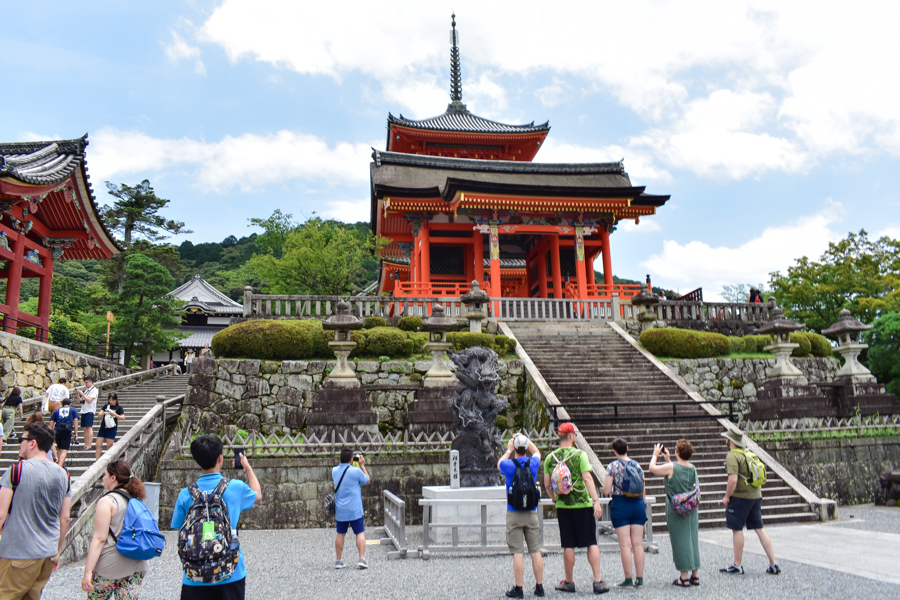
The history of Kiyomizu-dera dates back to the 8th century when it was first built, but the current buildings date back to the 17th century.
The temple is dedicated to the Buddhist deity Kannon and is famous for its wooden stage that juts out from the main hall, offering panoramic views of the city.
When visiting Kiyomizu-dera, there are several things to see and do:
Admiring the Wooden Stage: The wooden stage is the temple’s main attraction and offers stunning city views. The stage is built without nails and is a marvel of engineering.
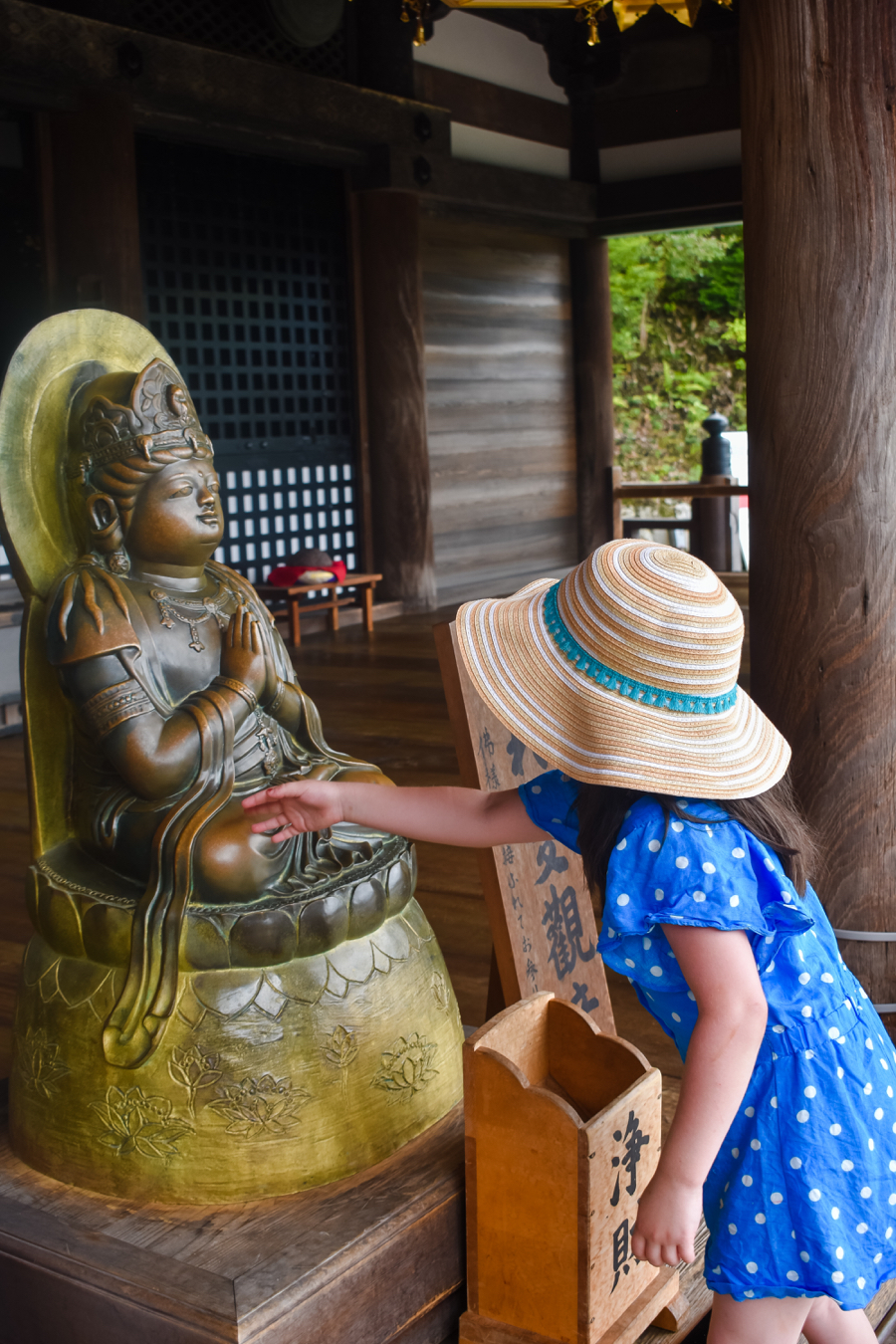 The temple’s main hall is beautiful and ornate, with intricate wood carvings and gold leaf decorations. Several smaller buildings surround the temple, including a pagoda and a tea house.
The temple’s main hall is beautiful and ornate, with intricate wood carvings and gold leaf decorations. Several smaller buildings surround the temple, including a pagoda and a tea house.
There are several food and souvenir stalls located around the temple where you can try local snacks like yatsuhashi (a type of sweet rice cracker) and buy souvenirs like Buddhist prayer beads and lucky charms.
The temple is on a hillside, and several walking paths and gardens are located around the temple. The surrounding nature is beautiful, particularly during autumn when the leaves change color.
Arashiyama Bamboo Grove
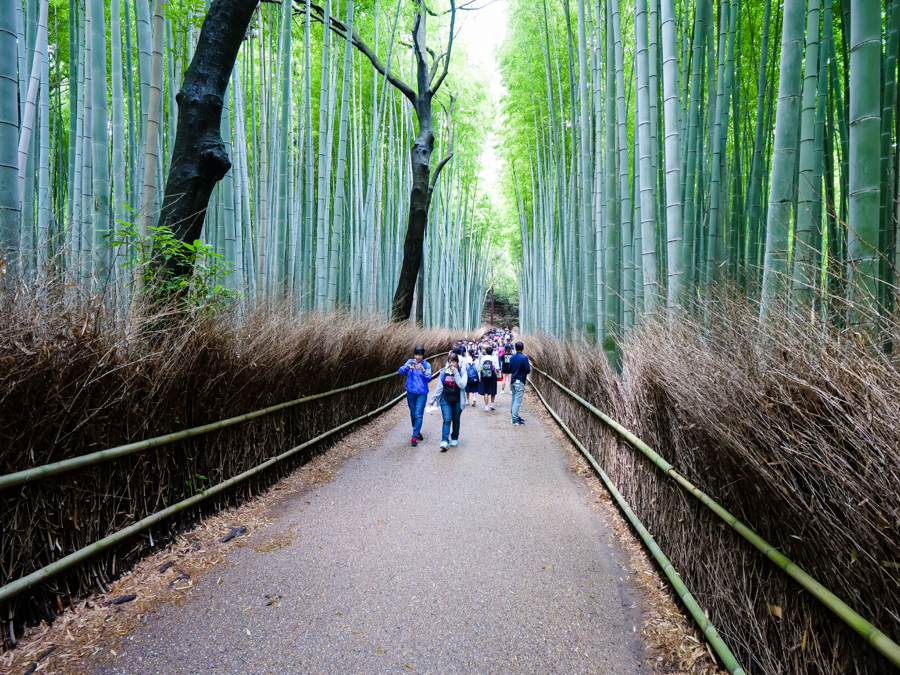 Arashiyama Bamboo Grove is one of Kyoto’s most iconic destinations, known for its tall bamboo groves that create a peaceful and serene atmosphere. The grove is located in the we
Arashiyama Bamboo Grove is one of Kyoto’s most iconic destinations, known for its tall bamboo groves that create a peaceful and serene atmosphere. The grove is located in the we
The main attraction of the grove is the towering bamboo stalks that create a tunnel-like path. Walking through the grove is a peaceful and calming experience, and it’s a great way to escape the hustle and bustle of the city.
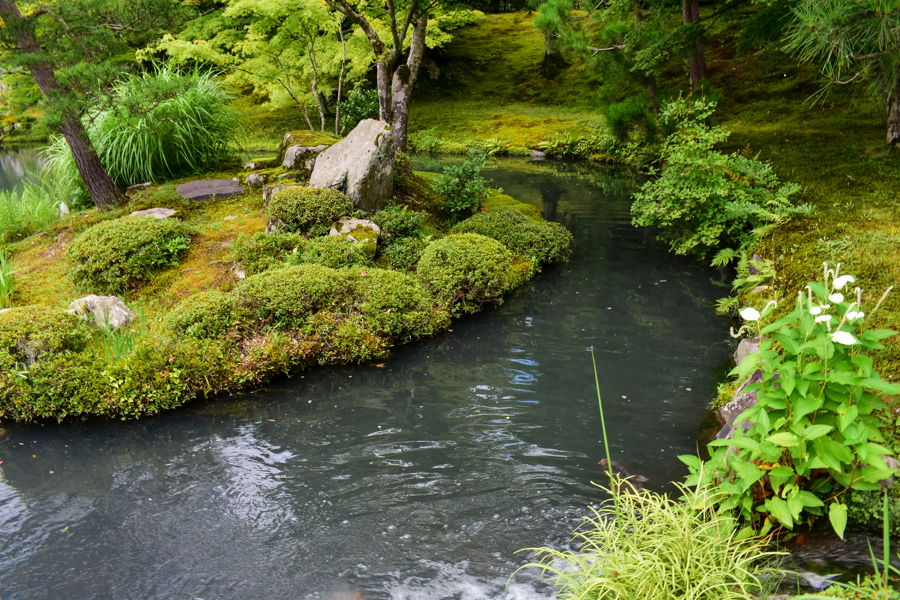 The Okochi-Sanso Villa is a traditional Japanese villa located near the bamboo grove. The villa was once the home of a famous actor and is now open to the public as a museum.
The Okochi-Sanso Villa is a traditional Japanese villa located near the bamboo grove. The villa was once the home of a famous actor and is now open to the public as a museum.
The villa is surrounded by beautiful gardens, and there are several walking paths that offer stunning views of the city.
The Tenryu-ji Temple is a UNESCO World Heritage Site located near the bamboo grove. The temple is famous for its beautiful gardens, which include a pond, walking paths, and several buildings.
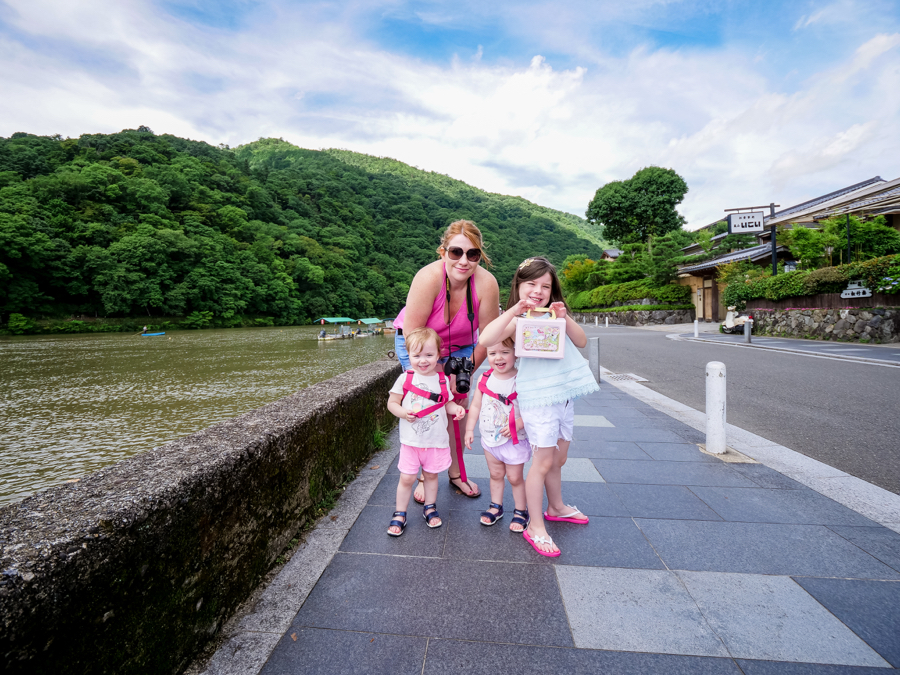 Try Local Snacks and Souvenirs: There are several food and souvenir stalls near the bamboo grove where you can try local snacks like tofu and buy souvenirs like bamboo products and traditional Japanese handicrafts.
Try Local Snacks and Souvenirs: There are several food and souvenir stalls near the bamboo grove where you can try local snacks like tofu and buy souvenirs like bamboo products and traditional Japanese handicrafts.
Nishiki Market
Nishiki Market is a bustling indoor market located in the heart of Kyoto, known for its vibrant atmosphere and wide variety of food and goods. The market has been around for over 400 years and is a popular destination for locals and tourists.
Several food stalls and shops offer traditional Kyoto dishes like mochi, sushi, and pickled vegetables.
Some of the most popular foods to try at the market include tsukemono (pickled vegetables), tofu, and matcha (powdered green tea).
The market is a great place to experience local culture and traditions. Many vendors are friendly and eager to share their knowledge about their products.
You can also see traditional Japanese ingredients like dried fish and seaweed being prepared and sold at the market.
Beyond the food and souvenir stalls, Nishiki Market is also surrounded by several local shops and restaurants. Exploring the surrounding area is a great way to experience the local culture and support small businesses.
Food and Drink
Kyoto is famous for its traditional Japanese cuisine, with many local specialties to try. Some must-try dishes include:
Kaiseki
Kaiseki is a traditional Japanese multi-course meal that typically consists of small, seasonal dishes that are carefully prepared and beautifully presented.
Kyoto is one of the best places in Japan to experience Kaiseki cuisine, as it has a rich culinary tradition and is known for its use of local ingredients.
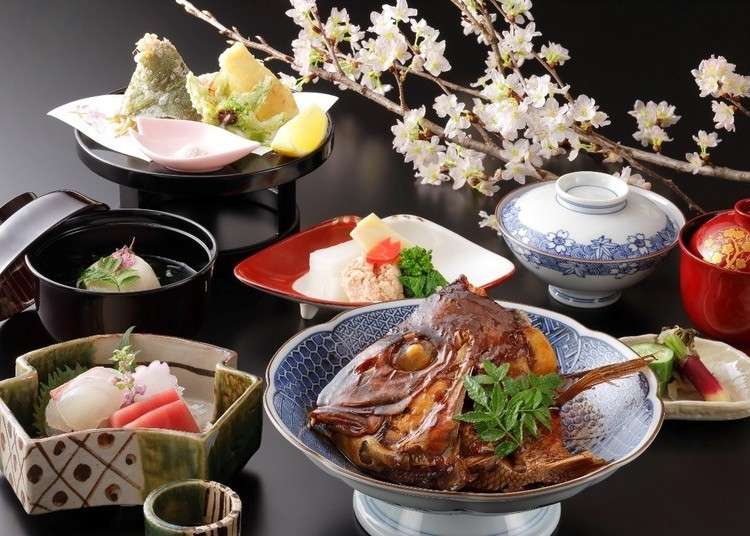 Many restaurants in Kyoto offer Kaiseki meals, ranging from high-end establishments to more affordable options. Some of the most popular places to try Kaiseki in Kyoto include:
Many restaurants in Kyoto offer Kaiseki meals, ranging from high-end establishments to more affordable options. Some of the most popular places to try Kaiseki in Kyoto include:
- Kikunoi: This Michelin-starred restaurant is known for its exquisite Kaiseki cuisine and beautiful Japanese garden.
- Kitcho Arashiyama: Another Michelin-starred restaurant that offers a traditional Kaiseki experience in a stunning setting.
- Gion Sasaki: A more affordable option that still delivers on quality and flavor, Gion Sasaki is a popular Kaiseki restaurant in the heart of Kyoto’s Gion district.
- Nakamura: This family-owned restaurant has been serving Kaiseki cuisine for over 200 years and is known for its use of local, seasonal ingredients.
- Hyotei: Located in a beautiful, historic building, Hyotei is one of Kyoto’s oldest and most famous Kaiseki restaurants, with a reputation for exceptional service and delicious food.
Yudofu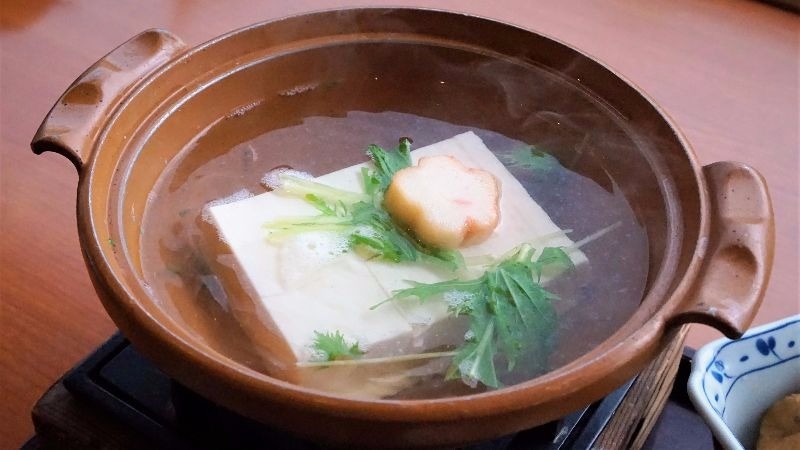 Yudofu is a traditional Japanese dish made from tofu that is boiled in hot water and served with a dipping sauce. It is a popular dish in Kyoto, especially during the winter months when the weather is cold.
Yudofu is a traditional Japanese dish made from tofu that is boiled in hot water and served with a dipping sauce. It is a popular dish in Kyoto, especially during the winter months when the weather is cold.
Many restaurants in Kyoto specialize in Yudofu, offering visitors a unique and delicious dining experience.
Some of the most popular places to try Yudofu in Kyoto include:
- Tousuiro: This restaurant is known for its delicious Yudofu, which is made from high-quality, locally sourced tofu and served in a traditional setting.
- Yudofu Sagano: Located near the famous Arashiyama Bamboo Grove, this restaurant offers a beautiful view of the surrounding area and its tasty Yudofu.
- Yudofu Kitamura: A cozy restaurant in the heart of Kyoto’s Gion district, Yudofu Kitamura serves delicious Yudofu dishes made from locally grown tofu.
- Kyo-Tofu Fujino: This restaurant is known for its creative take on Yudofu, incorporating unique ingredients like yuzu and green tea into its dishes.
- Hirome Yudofu: A small, family-owned restaurant that has been serving Yudofu for over 150 years, Hirome Yudofu is a must-visit for anyone interested in experiencing traditional Kyoto cuisine.
No matter where you choose to try Yudofu in Kyoto, you’re sure to enjoy this flavorful and unique dish that is beloved by locals and visitors alike.
Matcha
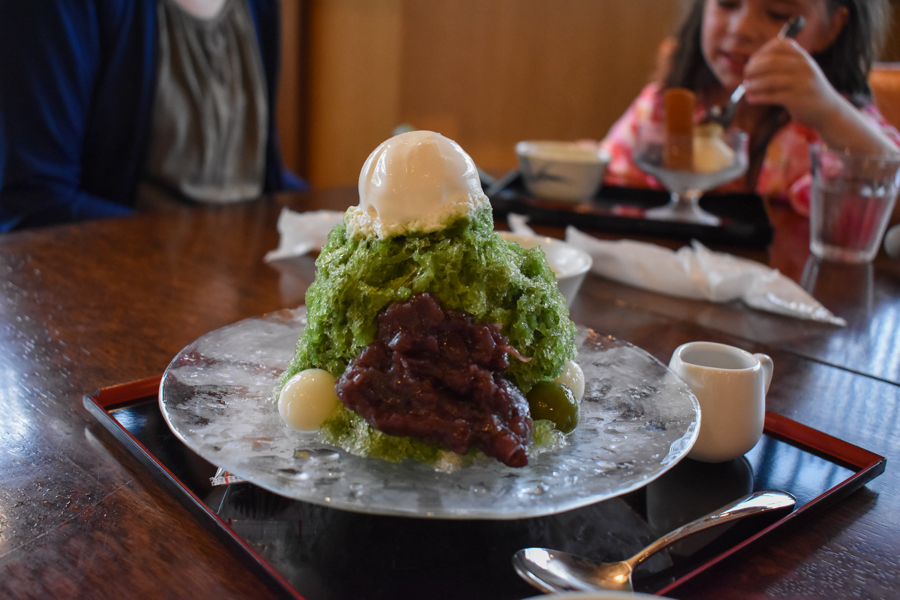 Kyoto is renowned for its matcha tea culture, and there are many places to enjoy this delicious and healthy beverage throughout the city. Here are some of the best places to try matcha in Kyoto:
Kyoto is renowned for its matcha tea culture, and there are many places to enjoy this delicious and healthy beverage throughout the city. Here are some of the best places to try matcha in Kyoto:
- Uji: Uji is a city located just south of Kyoto and is famous for producing high-quality matcha. Many tea shops and cafes in Kyoto source their matcha from Uji, and visitors can also take a day trip to the city to visit tea farms and learn about the traditional cultivation and production methods.
- Fushimi Inari Shrine: This popular shrine in southern Kyoto is known for its striking torii gates and has several food stalls selling matcha soft serve ice cream and other matcha treats.
- Tsujiri: This well-known matcha shop has several locations throughout Kyoto and is famous for its rich and creamy matcha soft serve ice cream and various other matcha desserts and drinks.
- Nakamura Tokichi: This historic tea shop has been in operation since 1854 and is famous for its high-quality matcha and traditional Japanese sweets. The shop has several locations in Kyoto, including one in the famous Gion district.
- Kyoto Obubu Tea Farms: This tea farm and factory located in the town of Wazuka, south of Kyoto, offers visitors the chance to learn about the production of matcha and other Japanese teas, as well as to taste a variety of different teas in a beautiful natural setting.
Whether you’re a matcha enthusiast or just looking to try something new, Kyoto is the perfect place to explore Japanese matcha tea’s rich and delicious world.
Sake
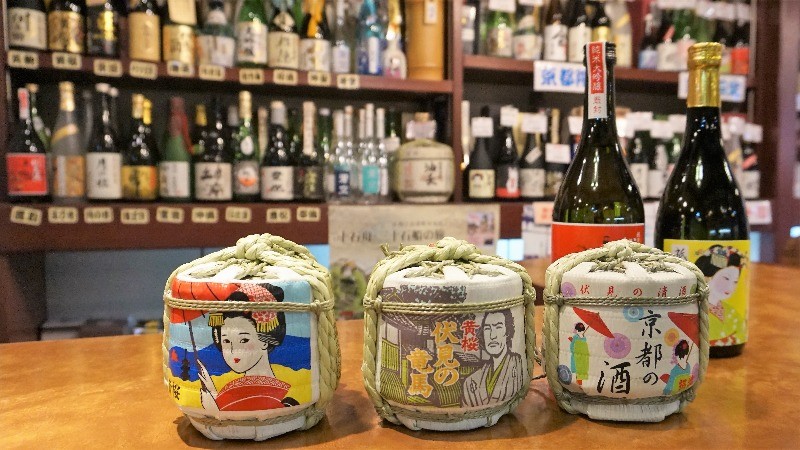 Kyoto is known for its rich cultural heritage and is also one of Japan’s top regions for sake production.
Kyoto is known for its rich cultural heritage and is also one of Japan’s top regions for sake production.
There are many sake breweries and shops in Kyoto, making it a great place to try different varieties and learn about the history and production of sake.
Some of the top places to try sake in Kyoto include:
- Gekkeikan Okura Sake Museum: This museum is located in the Fushimi district of Kyoto and offers visitors the opportunity to learn about the history and production of sake and taste different varieties.
- Nishiki Market: This bustling market in central Kyoto is home to many food vendors and shops, including several sake shops where visitors can taste and purchase different varieties.
- Fushimi Sake District: This historic district in southern Kyoto is home to many sake breweries and offers visitors the chance to sample different types of sake and learn about traditional brewing methods.
- Sake Tasting at Bars and Restaurants: Many bars and restaurants in Kyoto offer sake tastings or a wide variety of sake available for customers. Some popular options include Ponshukan Kyoto Station and Gion Kappa.
Cultural Experiences
Kyoto is a city that’s steeped in tradition, and there are many cultural experiences that you can have while visiting. Here are a few suggestions:
Tea Ceremony
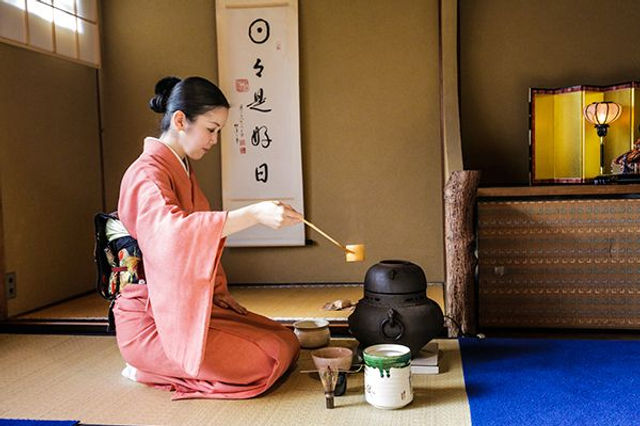 Kyoto is a wonderful place to experience the traditional Japanese tea ceremony, the Way of Tea or Chado. The tea ceremony is a cultural practice that involves the preparation and serving of matcha tea in a highly stylized and ritualized manner, with a focus on mindfulness, respect, and tranquility.
Kyoto is a wonderful place to experience the traditional Japanese tea ceremony, the Way of Tea or Chado. The tea ceremony is a cultural practice that involves the preparation and serving of matcha tea in a highly stylized and ritualized manner, with a focus on mindfulness, respect, and tranquility.
There are several places in Kyoto where you can participate in a tea ceremony, including:
- En Tea Ceremony: This tea house in the historic Gion district offers visitors the chance to participate in a traditional tea ceremony with a knowledgeable tea master. The tea house is beautifully decorated and provides a serene setting for the ceremony.
- Camellia Tea Ceremony: This tea house is located in the Higashiyama district and offers several different tea ceremony experiences, including a beginner’s course that introduces the tea ceremony’s basic principles and etiquette.
- Maikoya Tea Ceremony: This cultural experience center offers a range of traditional Japanese activities, including tea ceremonies. Visitors can choose from several different tea ceremony packages, ranging from a simple introduction to a full-length ceremony that includes the preparation of the tea.
- Tea Ceremony Room Ju-An: This tea house is located within the Kyoto National Museum and provides a unique opportunity to participate in a tea ceremony in a beautiful and historic setting.
Kimono Rental
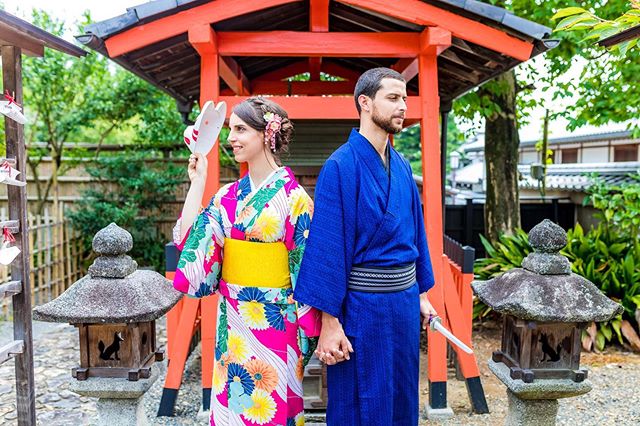 Kyoto is a great place to experience wearing a traditional Japanese kimono, and many shops and rental services throughout the city offer kimono rental for visitors. Here are some of the best places to rent a kimono in Kyoto:
Kyoto is a great place to experience wearing a traditional Japanese kimono, and many shops and rental services throughout the city offer kimono rental for visitors. Here are some of the best places to rent a kimono in Kyoto:
- Yumeyakata: This kimono rental shop has several locations throughout Kyoto and offers a wide range of kimono styles and colors to choose from. They also offer hair styling and makeup services to complete the traditional look.
- Kyoto Kimono Rental Wargo: This rental service has several locations in Kyoto and offers a variety of kimono styles for both men and women, as well as optional accessories and photography services.
- Okamoto Kimono Rental: This family-run rental shop has been in business for over 100 years and offers a wide selection of authentic kimono, including vintage and high-end designs.
- Kimono Rental Kyoto: This rental service is located in the historic Gion district and offers a range of kimono styles for both men and women, as well as hair and makeup services and photography packages.
- Kyoto Kimono Rental Yae: This rental shop is located in the Arashiyama district and offers a beautiful selection of kimono in traditional and modern styles, as well as rental packages that include tea ceremonies and other cultural activities.
Zen Meditation
Kyoto is home to many Zen temples, and you can participate in a Zen meditation session to learn about the practice of mindfulness and introspection.
Tips For Visiting
 Kyoto is a beautiful and historic city with many incredible sights and experiences to offer visitors. Here are some tips to help make your visit to Kyoto as enjoyable and rewarding as possible:
Kyoto is a beautiful and historic city with many incredible sights and experiences to offer visitors. Here are some tips to help make your visit to Kyoto as enjoyable and rewarding as possible:
Plan ahead
Kyoto is a popular destination, so it’s important to plan ahead to avoid crowds and make the most of your time. Consider booking accommodations, tours, and activities in advance to ensure availability.
Wear comfortable shoes
Kyoto is a walking city, so be sure to wear comfortable shoes that can handle a lot of walking on uneven surfaces.
Respect local customs and traditions
Kyoto is a city rich in tradition and culture, so be sure to respect local customs and etiquette. For example, remove your shoes when entering a temple or traditional Japanese home, and be mindful of your behavior in public spaces.
Take advantage of public transportation
Kyoto has an efficient and affordable public transportation system, including buses and subways. Consider purchasing a one-day or multi-day bus pass to make getting around the city easier.
Visit off-the-beaten-path sights
While Kyoto has many popular tourist attractions, don’t overlook some lesser-known sights and neighborhoods. Stroll through the charming streets of Gion, visit the beautiful gardens of the Heian Shrine, or explore the bamboo groves of Arashiyama.
Respect the environment
 Kyoto is a beautiful and natural city, so respect the environment and dispose of trash properly. Consider bringing a reusable water bottle and shopping bag to reduce waste.
Kyoto is a beautiful and natural city, so respect the environment and dispose of trash properly. Consider bringing a reusable water bottle and shopping bag to reduce waste.
Kyoto is a city rich in history, culture, and natural beauty. From its stunning temples and shrines to its delicious cuisine and traditional experiences, there’s something for everyone in this beautiful city.
Whether you’re a first-time visitor to Japan or a seasoned traveler, Kyoto is a destination that should be on your bucket list. So why not start planning your trip today?
Be sure to check out our vlog The Go To Family. Connect with us on Instagram, Twitter, and Pinterest !



